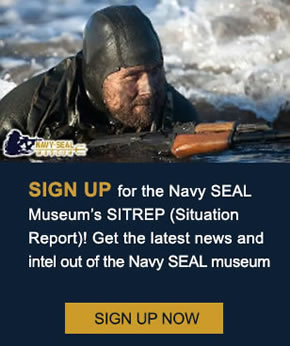

About the Navy SEALs
“Conducting clandestine missions behind enemy lines. Capturing enemy targets and intelligence against impossible odds. Bringing a threatening act of sea piracy to resolution in the blink of an eye. When they say “The Only Easy Day Was Yesterday,” it’s a motto backed by legendary achievements.”
— www.navy.com
Most of us woke up on the morning of August 6, 2011, to learn the devastating news that our nation had lost 17 courageous U.S. Navy SEALs along with five other Naval Special Warfare (NSW) personnel, Air Force Special Operations support personnel, U.S. Army air crew, and an Afghan security element. This happened when their CH-47 helicopter crashed after being hit with a rocket-propelled grenade in Afghanistan’s eastern Wardak province. Sadly too, there have been equally devastating missions; including June 28, 2005, when 11 other terrific SEALs lost their lives – also in Afghanistan – during a foiled mission and doomed rescue attempt, where another MH-47 crashed with all aboard.
Men don’t get assigned to a SEAL Team; they volunteer for this routinely extreme and often arduous duty. From World War II and into the modern-day conflict, very exceptional men have volunteered for some very tough assignments, and many have made the ultimate sacrifice. But who are these men? What is their heritage? And what is it that separates them from all others?
Today’s Naval Special Warfare SEAL and Special Warfare Combatant-craft Crewmen (SWCC) trace their unique and robust capabilities back to various legacy maritime commando units formed during World War II. They included the Atlantic and Pacific Scouts and Raiders, Naval Combat Demolition Units, Pacific Underwater Demolition Teams, Office of Strategic Services Maritime Unit, and a few smaller units that were formed to accomplish specific missions. Several of these units received basic or advanced training on the beaches and within the hinterland of St. Lucie County, which was the home of Amphibious Training Base (ATB) Fort Pierce through the war. The Navy SEAL Museum honors these pioneering units by praising their accomplishment and honoring their contributions to Maritime Special Operations and related Unconventional Warfare capabilities, which are mirrored in the operations, actions, and activities of today’s SEALs and SWCCs and their enabling infrastructure.
U.S Navy SEALs are the most notable component of the U.S. Navy’s Naval Special Warfare Command, which itself is the maritime component of the U.S. Special Operations Command. While the number of SEALs remains relatively small, they have had an outsized impact everywhere they’ve operated; from the beaches of Normandy and Korea to the difficult terrain of Pakistan and Afghanistan. Navy SEALs have been described as “a unique breed of warrior,” able to perform in exceedingly arduous sea, land, and air operating environments; day and night and under all weather conditions. They are highly trained and often tasked to conduct the most grueling and complex missions, which they have superbly and unfailingly accomplished throughout several generations and today after more than a decade at war.
Less glamorized, but equally resilient and standout NSW components are the Special Boat Teams and their SWCC warriors. SWCCs operate and maintain an inventory of specially designed riverine and ocean-going combatant craft. These men, all volunteers for demanding seaborne and near-shore special operations duty, are specially trained to accomplish a variety of unique missions that include the clandestine infiltration and exfiltration of SEALs and other Special Operations Forces, shipboard assaults, and intelligence collection in the most demanding maritime environments; during day and nighttime operations. SWCC are trained extensively in craft and weapons tactics, techniques, and procedures; including parachuting with long-range craft aerial delivery systems. SWCC provide dedicated, rapid mobility in littoral and in-land waterway areas, where other maritime forces cannot operate. Like their SEAL counterparts, SWCCs are physically fit, highly motivated, combat-focused, and totally responsive in high stress situations.
The National Navy SEAL Museum is proud to educate the American public about the history and importance of Naval Special Warfare and its preeminence in maritime special operations, and about the contributions and sacrifices that SEAL, SWCCs, and others in NSW have made while protecting our freedom and preserving democracy in peace and war.
More About Navy SEALs:

